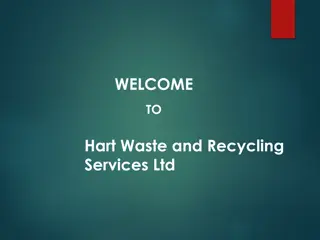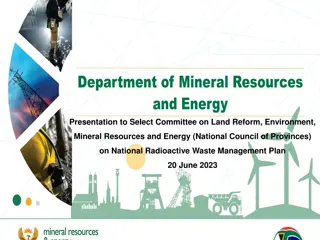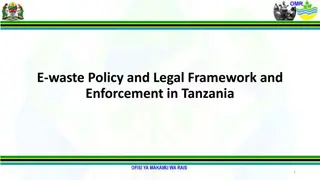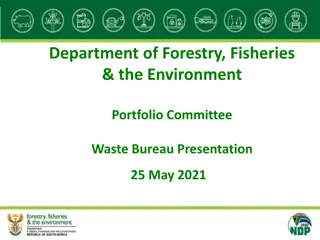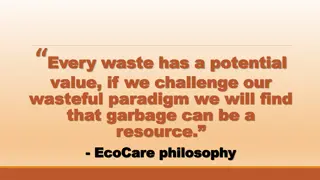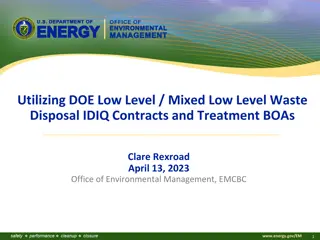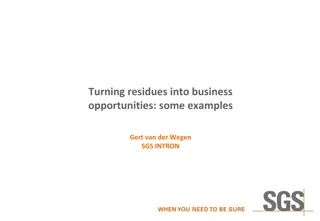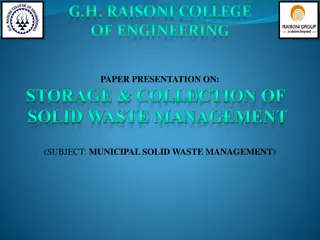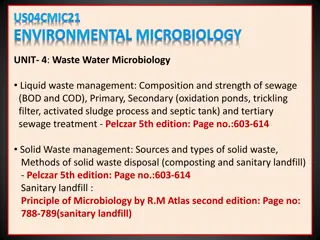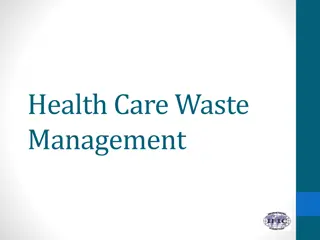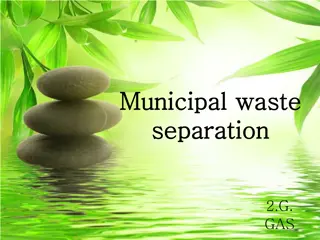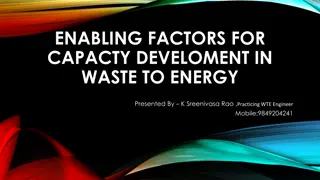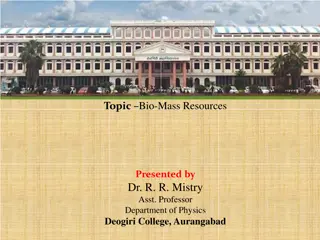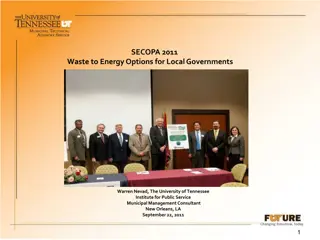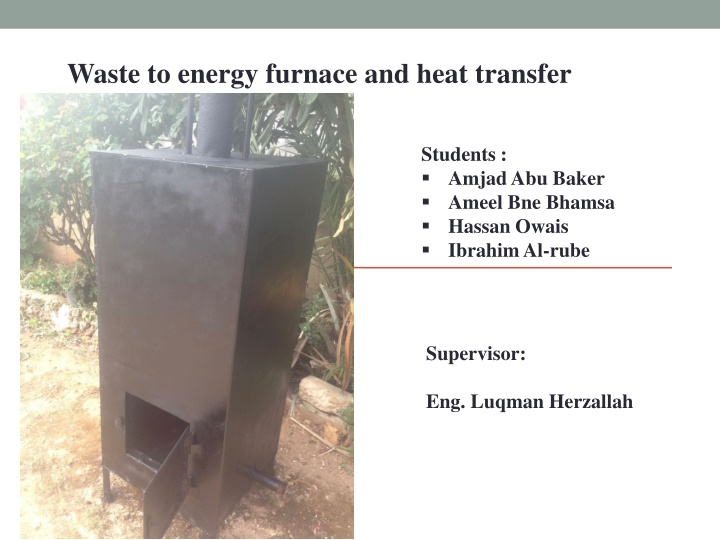
Waste to Energy Furnace Analysis
Waste to energy furnace and heat transfer analysis conducted by students aiming to generate electricity and heat from waste combustion. The study includes furnace design details, zonal method analysis, waste composition breakdown, lower heating value calculation, and more.
Download Presentation

Please find below an Image/Link to download the presentation.
The content on the website is provided AS IS for your information and personal use only. It may not be sold, licensed, or shared on other websites without obtaining consent from the author. If you encounter any issues during the download, it is possible that the publisher has removed the file from their server.
You are allowed to download the files provided on this website for personal or commercial use, subject to the condition that they are used lawfully. All files are the property of their respective owners.
The content on the website is provided AS IS for your information and personal use only. It may not be sold, licensed, or shared on other websites without obtaining consent from the author.
E N D
Presentation Transcript
Waste to energy furnace and heat transfer analysis Students : Amjad Abu Baker Ameel Bne Bhamsa Hassan Owais Ibrahim Al-rube Supervisor: Eng. Luqman Herzallah
Contents Introduction Methodology Practical work Result and analysis Discussion Conclusion & recommendation
Introduction Waste to energy process Is the process of generating energy in the form of electricity and or heat from the waste combustion. Waste to energy furnace is the place at which treatment and combustion of the waste occur.
Introduction Furnace was built with diameter (0.58*0.58*0.64) m It was built by using two steel layers with thickness 3 mm, separated by Rockwell layer with thickness. Mass flow rate of the waste is 0.12 kg/s.
Zonal method It s mathematical procedure used to analyze complex and realistic radiative heat transfer problems. It s basically used when the temperature of surfaces are unknown. it gives heat transfer interchange area between surfaces and zones.
Zones of the furnace Zone 1: the ground of the furnace. Zone 2: the walls surround combustion area. Zone 3: the walls surround gas area. Zone 4: the ceiling of the furnace. Zone 5: combustion zone, the zone at which combustion occurs. Zone 6: gas zone, the zone at which evaporator located which shown in figure
Methodology LHV & air needed Zones temperature Evaporator design Chimney design
Waste composition % overall 3.20%2%3.30% 4.30% organic biomass paper glass celluosics metals plastics wood textile other small materials 20% 13.50% 6.50% 3.40% 5.20% 29.10% 9.10%
Lower heating value (LHV) The lower heating value extracted from the combustion of composition is 1500.4 KJ/Kg The mass flow rate of waste =0.12kg/s Heat = ??? ??????=1500.4*0.12=180 kw
Air needed The stoichiometric combustion of the waste is based on the following three equation: ????+ ?(?2+ 3.76?2) ? ??2+? ?2? + ??2 To grantee complete combustion 20% excess air is considered. The amount of air needed = 0.45?3 ?
Flue gases composition O2, 3.30% CO2, 20% SO2, 0.22% H2O, 11.40% N2, 65.30%
Zones temperature Zonal method Surface to surface total interchange area Gas to surface total interchange area Gas to gas total interchange area ?,???= ?,???+ ?,????+ ?,????
Zones temperature The temperature of zones as following : Zones Temp (K) 904.1 Zone 1 936.6 Zone 3 937.4 Zone 4 947.5 Zone 5 944.1 Zone 6
Chimney design Q chimney =56045.6 w Chimney design 0.0825 ??(kg/s) V(m/?) 7 ??(?2) 0.012 D(m) 0.1236
Result and analysis Theoretical volume flow rate of water =0.11 L/s Measured volume flow rate of water =0.07 L/s T=250 ,? = 4??? Superheated steam. ?? ?? , ? = 7.4 ????.? = 2970 which is sufficient for steam turbine uses.
Discussion According to the insulation system used: ??? ?????? ??? ???? flow rate of water For this reason the flow rate of water decreasing experimentally Due to this reason the error appear
Recommendation Modifying the insulation system (thermal brick and cement) Using preheater for inlet water Using calorimeter to increase steam quality
Cost Items Steel Rock wool Evaporator Welding Fan Transportation Miscellaneous Total Cost(NIS) 600 180 100 500 100 150 250 1880

